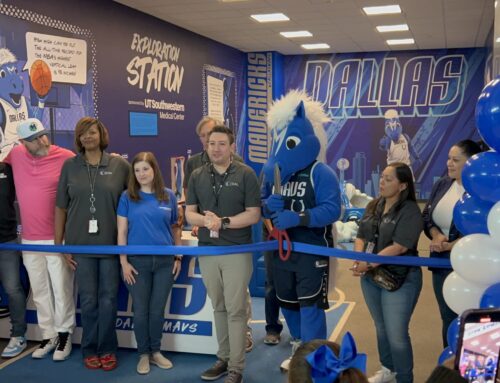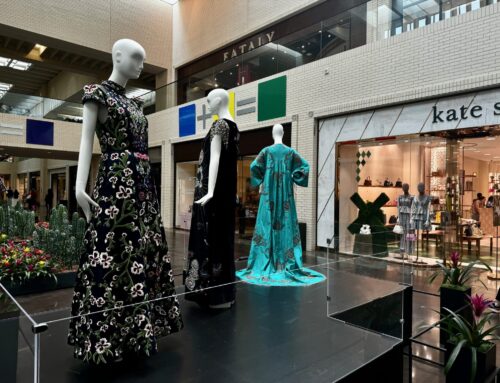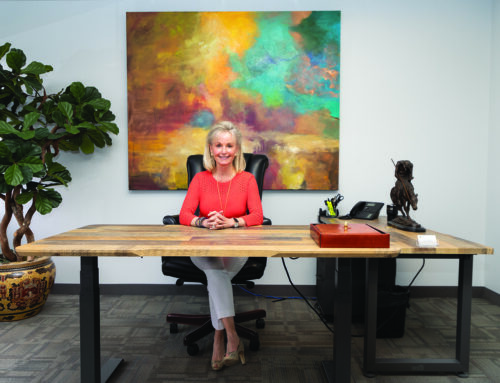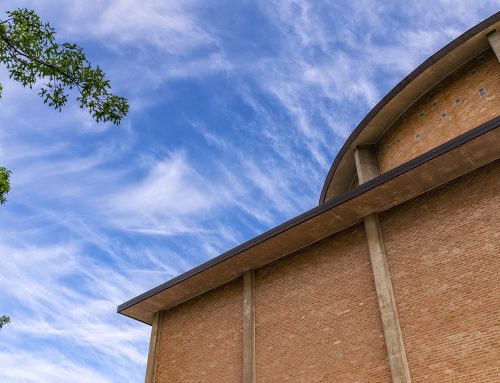
Photography by Corrie Aune.
Harold Hogue and Lauren Coppedge have much in common. They both began their careers as public school educators, witnessed the inner workings of Dallas ISD and have seen, up close, social inequities and opportunities for change. What’s more, both have a record of acting on those realizations and improving the worlds they occupy.
Their differences, however, make them an especially effective team.
He lives in southern Oak Cliff. She lives in Preston Hollow.
Last December the City of Dallas’ office of equity and inclusion announced a collaboration with their small, albeit established, social impact consulting firm, Cospero, to create our city’s first racial equity plan.
Hogue lightheartedly complains about delayed recycling pickups in his neighborhood. Coppedge smiles when the room jokes that sanitation services in her Sparkman Estates subdivision, located in a pricier part of the city, are probably on time, every time.
And while that is a quip, an assumption, the Resilient Dallas study — a touchstone document in creating Dallas’ racial equity agenda — shows that white Dallasites earn more money and live in more affluent neighborhoods with better services and amenities than their Black or Hispanic counterparts.
Achieving racial equity in the City would mean that race or ethnicity no longer predicts economic or educational opportunity, access to housing and quality infrastructure, health services or levels of legal justice, the consultants say.
“That we’re telling two stories, or a story from different angles, makes our partnership work. You need the heart and the head — and the different lived realities — every day,” Hogue says.
Whether Coppedge or Hogue is the heart or the head varies from day to day, they say.
Hogue started as a teacher and later moved up to Dallas ISD’s central offices. He coached youth football in the Fair Park area after school. That’s where “the light bulb went off,” he says. He saw the disconnect between the administrators’ efforts and the needs of the parents and students he engaged with on the field.
“Most of those working at DISD were well-intentioned — I was inside and never felt malicious intent — but they were dealing with systems, structures and barriers that keep them from delivering on the mission for families.”
He wanted to package all the things he was learning, try to repair things at an institutional level. He joined nonprofit boards and entered a fellowship program at a nonprofit called Leadership ISD, which focuses on racial equity in public schools.
That’s where he met Coppedge. As a teacher in St. Louis, she saw lower-income families deprived of quality classroom experiences. Attempts to do better for her students were thwarted by administrative policies. The same realizations, frustrations and ideologies that motivated Hogue drove her to the nonprofit sector.
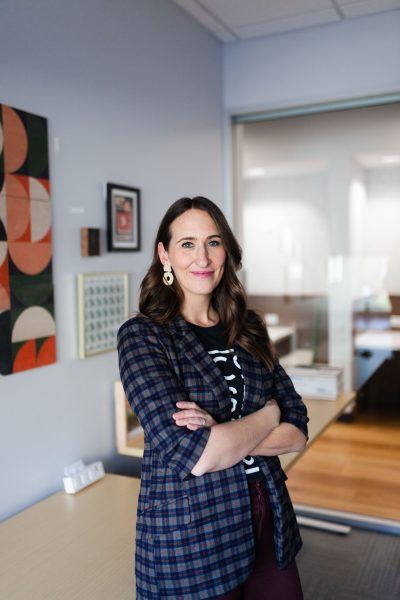
Hogue was the first of the two to strike out on his own, quitting his job right after his wedding day and giving himself 90 days to start earning a living as a consultant.
“It was a common entrepreneurial story,” he says. He sold his car, continued hustling and proved himself working with United Way, Fair Park and other well-established local organizations. He recruited Coppedge in part because she excelled at design and marketing.
Cospero, with a staff of fewer than 10 employees, had a number of projects in its portfolio prior to submitting its racial-equity-plan bid. To name a few, they led United Way’s Grow South Grow Strong initiative, worked alongside Teach.org to devise recruitment strategies for Texas Woman’s University, and they facilitated a joint program venture between Leadership ISD and The Concilio, which empowers Lantinx families with students in public schools.
The racial equity plan is slated to be presented to Dallas City Council in summer 2022 and will help the City prioritize and establish measurable short- and long-term goals and accountability metrics.
Racial equity plan development relies heavily on input from residents. To that end, Cospero has launched in-person and virtual engagement strategies. At the center of that is the WeareoneDallas.org, which explains the effort and allows Dallas residents to weigh in.
There is no shortage of ideas and input, but people don’t trust that things will actually happen, Hogue says.
Many feel this way, even some City Council members.
Within the City’s numerous departments exist an array of commissioned plans and presentations — there are transportation plans, digital broadband equity plans, human rights plans, public arts plans, and the list goes on. Many of those have hit roadblocks and delays when it comes to implementation.
During a recent subcommittee meeting, in response to an audit on the housing department’s comprehensive housing plan, District 1 representative Chad West (while pointing to the plan’s reported lack of racial equity goals) said, “Numerous strategic plans have been created by housing task forces and consultants over the years, but when staff and council are left to their own devices to implement them, little has occurred and goals were not met.”
It is one of the things that keeps coming up, Hogue says.
“One of the things that I’m trying to get the word out about is, yes, there are a lot of plans in the city, but what we are doing actually has not been done before, involving every one of the City’s 40-plus departments. We’ve read through dozens of plans, and we want the racial equity plan to be a driver of all those other plans, the ones that directly impact race.”
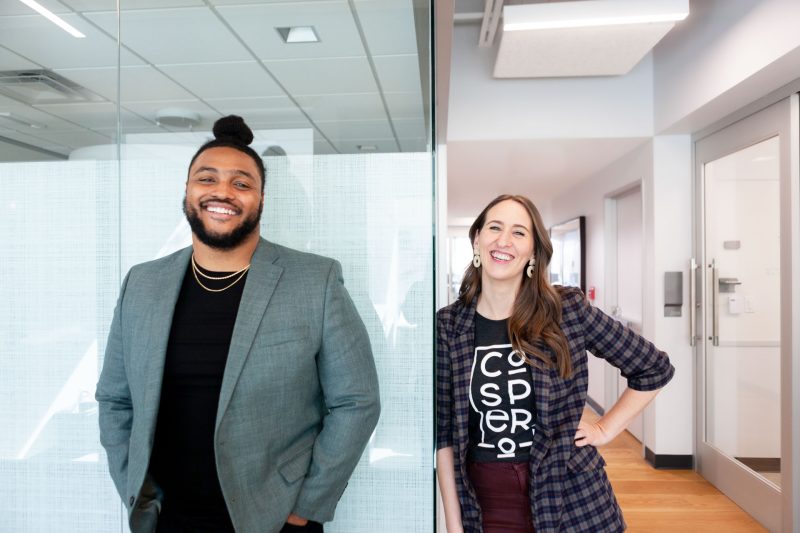
Coppedge describes the effort as creating a table of contents, making previous work more accessible and implementable.
“It’s going to be the one place that people can go to see how disparities are being addressed,” Coppedge says.
Interdepartmental cooperation is unique to the creation of this racial equity plan, says City of Dallas equity officer Dr. Lindsey Wilson. It’s different from anything that has been done in the past.
It is more accurate to describe the plan as a “strategic framework” than to look at it as a new plan, Wilson says.
“And the beauty of it being collective is that it gives us the opportunity to look at plans that are either in place or have been created and ask, ‘Where does the equity show up here?’”
She believes every department at City Hall has a part to play when it comes to achieving racial equity.
“In spite of how either internal-facing or community-facing our departments are,” Wilson says, “everyone literally has a critical role to make this happen.”
The Cospero consultants are meeting one by one with those City departments. In fact, Hogue says, he’s meeting with the sanitation department this week, which is “so funny” considering the flyer he just received about the delayed recycling pickup in his Red Bird neighborhood.
“It’s too much,” he says, laughing. “But it shows how real it is for us. The thing that excites me is that we’re working internally to shift external practices that actually impact the day-to-day lives of all residents.”


